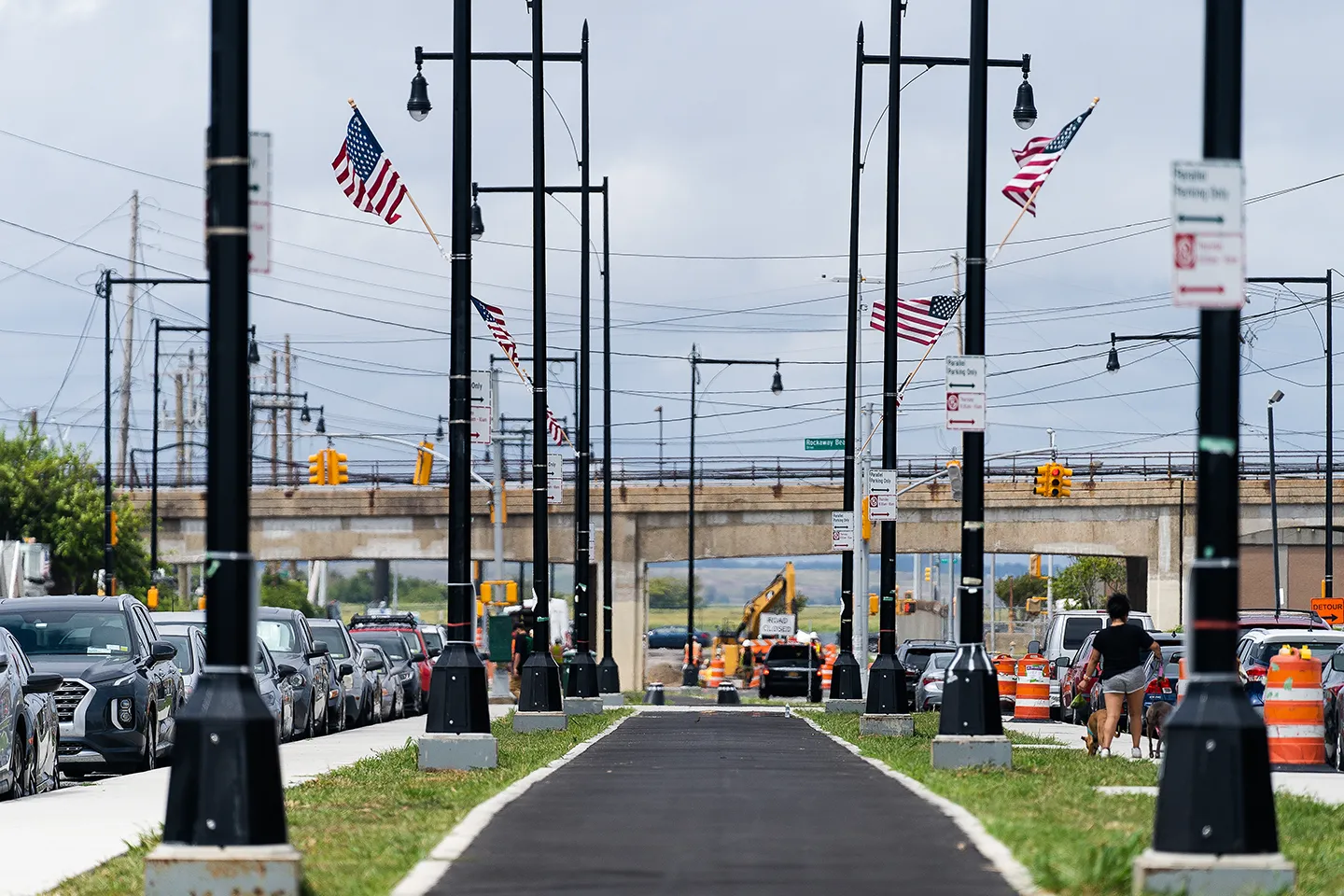In the past few years, we’ve seen a marked shift to developing and delivering resilient design solutions. This shift, when viewed alongside the substantial federal resources coming online for infrastructure investments, represents an exciting moment for the professional design community to offer bold and creative solutions to client project challenges.
A Foundation of Planning
Our journey in climate resilience engineering was ignited by necessity as our clients across public works departments, transportation agencies, and commercial utilities, charged with managing billion dollar capital improvement programs, needed to be able to identify projects and standards that could promote safety and a reliable level of service over the assets’ design life – often a 100 years or more. Building from a strong foundation of community and regional planning frameworks, we guided our clients through tough risk tolerance conversations offering detailed hazard modeling scenarios to illuminate impacts, illustrate tradeoffs, and prioritize projects. These efforts and insights, gleaned from more than 15 years supporting industry trailblazers, forged the integrated resilience design approach that we have today. Data-driven and science-based, our approach is grounded in practice and the need to transform and communicate quantitative results for hazards like floods and wildfires, and extreme heat analysis, into actionable insights and tools for risk-informed decision making and design.
Putting Plans to Work
As our clients worked with us to integrate changing climate conditions more fully into strategic and long-term plans and programming for future efforts, the need for resilience implementation has shifted towards the more immediate future and projects currently in the works. Clients often ask, "How can I bring this new climate-risk information to projects in development?" or, "Will this project withstand more intense rainfall rates?" These questions aren't easy to answer, but they mirror the broader shift we see as the AEC industry focuses more fully on reducing climate risk and delivering resilient design solutions.
We've been able to help address these questions by updating design standards and climate loads. Design professionals can understand the climate impacts over a project's useful life by updating the parameters of design for climate loads for intense rainfall, increased wave hazards, or extreme heat. As captured by our work with New York City on its Climate Resilient Design Guidelines or the National Academy of Sciences' Transportation Research Board on its Design Guide to Incorporate Climate Science in Transportation Infrastructure, our contributions both codified key inputs to the design process and established the fact that changes to design processes will be essential to achieving the target lifespan for these projects.
In collaboration with our clients, we’ve found that it takes more than updating design standards and loads alone to help solve these questions. Climate resilience necessitates a systems-based approach that transcends project boundaries."
Mat Mampara and Jennifer Pepson Elwood
In a specific example of implementing such standards into projects, we provided recommendations to improve resiliency from increased rainfall event for the reconstruction of Beach 108th Street project in the Rockaways. As Engineer-of-Record on this project, our multi-disciplinary team incorporated our recommendations during the design phase, which included managing increased rainfall event through green infrastructure practices such as new porous pavement. The project was recently constructed to allow 1.3 million gallons of stormwater to infiltrate through pavement, which in turn reduces flooding along the street.
 The Beach 108th Street Improvements project in the Rockaways neighborhood of New York City.
The Beach 108th Street Improvements project in the Rockaways neighborhood of New York City.
Similarly, our team led a feasibility study and environmental impact statement (EIS) comprising of a multi-disciplinary team of planners, architects, landscape architects, engineers, environmental scientists, community engagement specialists, and economists to develop a comprehensive water management strategy to reduce flood risk from coastal storm surge, sea level rise, and increased rainfall events for the City of Hoboken and portions of Jersey City and Weehawken as part of the Rebuild by Design-Hudson River project. This American Council of Engineering Companies (ACEC) national award winning project was completed in two years with support from the community and an approved record of decision that allowed the project to move into final design and construction.
In collaboration with our clients, we’ve found that it takes more than updating design standards and loads alone to help solve these questions. Climate resilience necessitates a systems-based approach that transcends project boundaries. For example, buildings and developments form neighborhoods and communities that are connected by infrastructure networks that make up larger watersheds, landscapes, and coastlines, creating complex interdependencies essential for advancing resilient infrastructure design.
Resilience Design Studio
Our integrated approach recognizes this larger context and supports resilient design solutions that are risk-informed, context-sensitive, and effective. The studio connects the subject matter expertise across our firm, harnessing our collective capabilities to tackle resilience challenges that extend beyond any particular discipline.
Our number one piece of advice to clients is to "just start" your resilience journey, no matter where you are. A first question might be, “will your project be able to withstand more intense rainfall rates?” Whether integrating future conditions into planning or implementing resilient design standards or just beginning to understand risks – start where you are and know you aren't alone in working on this challenge.